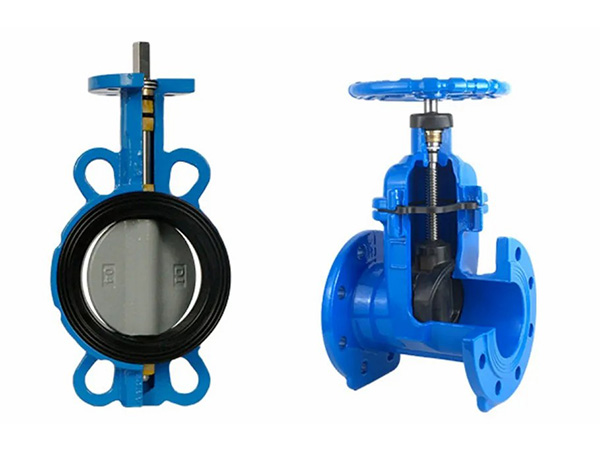What is the difference between the use of butterfly valve and gate valve?

According to the role and use of gate valve and butterfly valve, the flow resistance of gate valve is small, and the sealing performance is good, because the flow direction of gate valve valve plate and medium is vertical Angle, if the gate valve switch in the valve plate is not in place, the erosion of the medium on the valve plate makes the valve plate flutter, which is easy to cause gate valve seal damage.
Butterfly valve is also called flip valve, is a simple structure of the control valve, can be used for low pressure pipeline media switch control butterfly valve refers to the closing part (valve disc or butterfly plate) for the disc, revolving around the valve shaft to achieve the opening and closing of a valve, Valves can be used to control the flow of various types of fluids such as air, water, steam, various corrosive media, mud, oil, liquid metal and radioactive media. It mainly plays the role of cutting and throttling on the pipeline. The opening and closing part of the butterfly valve is a disc-shaped butterfly plate that rotates around its own axis in the valve body to achieve the purpose of opening and closing or adjusting.
The butterfly plate is driven by the valve stem, and if it is turned 90°, it can complete a opening and closing. Changing the deflection Angle of the plate can control the flow rate of the medium.
Usage conditions and media: Butterfly valve is suitable for producing furnace, gas, natural gas, liquefied petroleum gas, city gas, hot and cold air, chemical smelting and power generation environmental protection, building water supply and drainage and other engineering systems to transport a variety of corrosive, non-corrosive fluid media on the pipeline, used to regulate and cut off the flow of the medium.
Gate valve (gatevalve) is an opening and closing part of the gate, the direction of motion of the gate is perpendicular to the direction of the fluid, the gatevalve can only be fully opened and fully closed, the discomfort door parameters vary, usually 5°, the medium temperature is not high when 2°52 '. To improve its processability and make up for the deviation of the sealing surface Angle during processing, this kind of ram is called elastic ram.
When the gate valve is closed, the sealing surface can be sealed only by relying on the medium pressure, that is, only relying on the medium pressure to press the sealing surface of the gate plate to the seat on the other side to ensure the sealing of the sealing surface, which is self-sealing. Most gate valves are forced to seal, that is, when the valve is closed, it is necessary to rely on external forces to force the gate to the seat to ensure the tightness of the sealing surface.
Mode of motion: The gate valve's gate plate moves in a straight line with the valve stem, also called the gate valve. Usually there is a trapezoidal thread on the lifting rod, and through the nut at the top of the valve and the guide groove on the valve body, the rotating motion is changed into a straight motion, that is, the operating torque is changed into the operating thrust. When the valve is opened, when the lift height of the gate is equal to 1:1 times the diameter of the valve, the channel of the fluid is completely unblocked, but this position can not be monitored during operation. In actual use, it is the vertex of the valve stem as a sign, that is, the position of the opening cannot be moved, as its full open position. In order to consider the temperature change, the locking phenomenon is usually opened to the apex position, and then reversed 1/2-1 turns, as the position of the fully opened valve. Therefore, the fully open position of the valve is determined by the position of the ram (that is, the stroke >). Some gate valve stem nut is located on the gate plate, the hand wheel rotation drives the valve stem to rotate, and the gate plate is lifted, this valve is called the rotating rod gate valve or the dark rod gate valve.









 +86-021-67895388
+86-021-67895388 shghfmc@163.com
shghfmc@163.com  93862333
93862333